Physic nut
Jatropha curcas
Spurge (Euphoriaceae) Family
Description: This shrub or small tree has large, 3- to 5-parted alternate leaves. It has small, greenish-yelllow flowers and its yellow, apple-sized fruits contain three large seeds.
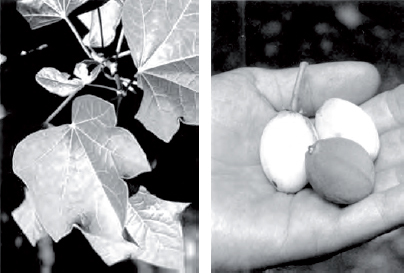
The seeds taste sweet but their oil is violently purgative. All parts of the physic nut are poisonous.
Habitat and Distribution: Throughout the tropics and southern United States.
Poison hemlock, fool’s parsley
Conium maculatum
Parsley (Apiaceae) Family
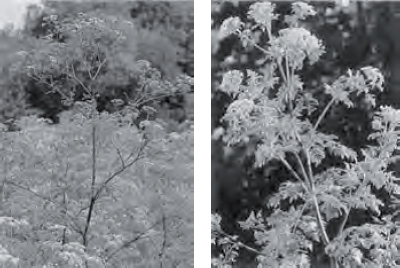
Description: This biennial herb may grow to 2.5 meters high. The smooth, hollow stem may or may not be purple or red striped or mottled. Its white flowers are small and grow in small groups that tend to form flat umbels. Its long, turniplike taproot is solid.
This plant is very poisonous and even a very small amount may cause death. This plant is easy to confuse with wild carrot or Queen Anne’s lace, especially in its first stage of growth. Wild carrot or Queen Anne’s lace has hairy leaves and stems and smells like carrot. Poison hemlock does not.
Habitat and Distribution: Poison hemlock grows in wet or moist ground like swamps, wet meadows, stream banks, and ditches. Native to Eurasia, it has been introduced to the United States and Canada.
Poison ivy and poison oak
Toxicodendron radicans and Toxicodendron diversibba
Cashew (Anacardiacese) Family
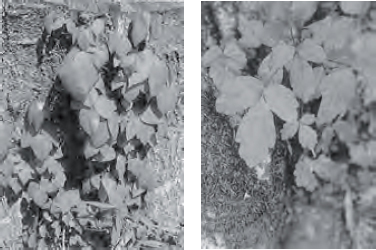
Description: These two plants are quite similar in appearance and will often crossbreed to make a hybrid. Both have alternate, compound leaves with three leaflets. The leaves of poison ivy are smooth or serrated. Poison oak’s leaves are lobed and resemble oak leaves. Poison ivy grows as a vine along the ground or climbs by red feeder roots. Poison oak grows like a bush. The greenish-white flowers are small and inconspicuous and are followed by waxy green berries that turn waxy white or yellow, then gray.
All parts, at all times of the year, can cause serious contact dermatitis.
Habitat and Distribution: Poison ivy and oak can be found in almost any habitat in North America.
Poison sumac
Toxicodendron vernix
Cashew (Anacardiacese) Family
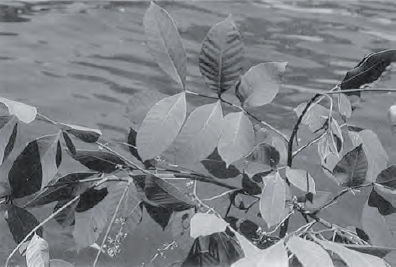
Description: Poison sumac is a shrub that grows to 8.5 meters tall. It has alternate, pinnately compound leafstalks with 7 to 13 leaflets. Flowers are greenish-yellow and inconspicuous and are followed by white or pale yellow berries.
All parts can cause serious contact dermatitis at all times of the year.
Habitat and Distribution: Poison sumac grows only in wet, acid swamps in North America.
Renghas tree, rengas tree, marking nut, black-varnish tree
Gluta
Cashew (Anacardiacese) Family
Renghas tree, rengas tree, marking nut, black-varnish tree
Gluta
Cashew (Anacardiacese) Family

Description: This family comprises about 48 species of trees or shrubs with alternating leaves in terminal or axillary panicles. Flowers are similar to those of poison ivy and oak.
CAUTION
Can cause contact dermatitis similar to poison ivy and oak.
Habitat and Distribution: India, east to Southeast Asia.
Description: This family comprises about 48 species of trees or shrubs with alternating leaves in terminal or axillary panicles. Flowers are similar to those of poison ivy and oak.
Can cause contact dermatitis similar to poison ivy and oak.
Habitat and Distribution: India, east to Southeast Asia.
Rosary pea or crab’s eyes
Abrus precatorius
Leguminosae (Fabaceae) Family
Description: This plant is a vine with alternate compound leaves, light purple flowers, and beautiful seeds that are red and black.
Habitat and Distribution: This is a common weed in parts of Africa, southern Florida, Hawaii, Guam, the Caribbean, and Central and South America.
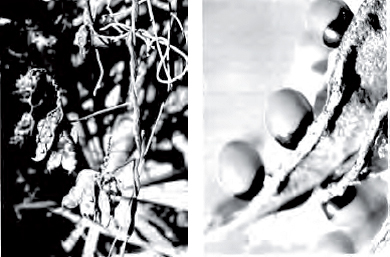
This plant is one of the most dangerous plants. One seed may contain enough poison to kill an adult.
Strychnine tree
Nux vomica
Logania (Loganiaceae) Family
Description: The strychnine tree is a medium-sized evergreen, reaching a height of about 12 meters, with a thick, frequently crooked trunk. Its deeply veined oval leaves grow in alternate pairs. Small, loose clusters of greenish flowers appear at the ends of branches and are followed by fleshy, orange-red berries about 4 centimeters in diameter.
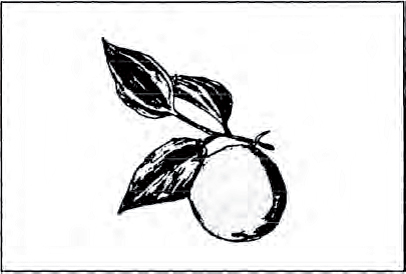
The berries contain the dislike seeds that yield the poisonous substance strychnine. All parts of the plant are poisonous.
Habitat and Distribution: A native of the tropics and subtropics of southeastern Asia and Australia.
Trumpet vine or trumpet creeper
Campsis radicans
Trumpet creeper (Bignoniaceae) Family
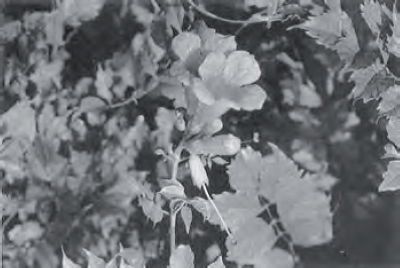
Description: This woody vine may climb to 15 meters high. It has pealike fruit capsules. The leaves are pinnately compound, 7 to 11 toothed leaves per leaf stock. The trumpet-shaped flowers are orange to scarlet in color.
This plant causes contact dermatitis.
Habitat and Distribution: This vine is found in wet woods and thickets throughout eastern and central North America.
Water hemlock or spotted cowbane
Cicuta maculata
Parsley (Apiaceae) Family
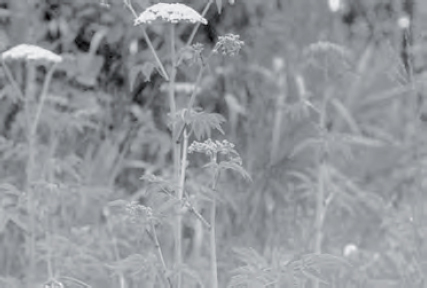
Description: This perennial herb may grow to 1.8 meters high. The stem is hollow and sectioned off like bamboo. It may or may not be purple or red striped or mottled. Its flowers are small, white, and grow in groups that tend to form flat umbels. Its roots may have hollow air chambers and, when cut, may produce drops of yellow oil.
This plant is very poisonous and even a very small amount of this plant may cause death. Its roots have been mistaken for parsnips.
Habitat and Distribution: Water hemlock grows in wet or moist ground like swamps, wet meadows, stream banks, and ditches throughout the Unites States and Canada.